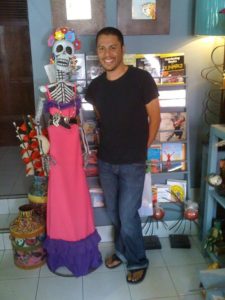About Guadalajara

Birrierias are restaurants that specialize in birria, a meat stew typical of the region.
More about Guadalajara
With 4.4 million people in its greater metropolitan area, Guadalajara is among Latin America’s ten biggest cities. Like any other huge city, it’s got a ton to offer: great architecture, varied restaurants, and rich historic sites. It’s a regional center for government, shopping, academia, nightlife, and sports. Guadalajara hosts some of Mexico’s most important festivals and cultural events, along with the 2011 Pan-American Games. It’s also the mariachi capital of the world, and bands may be found playing in the Plaza de los Mariachis or at a number of other venues.
But perhaps most remarkable is the warmth and spirit of the tapatíos, as the locals call themselves. In Guadalajara, more than anywhere else, we’ve had new acquaintances offer to show us around or invite us out for a night on the town. We also get lots of solicitous advice on where to go, what to do, and how much hot sauce to put on our food. (“Cuidado, te vas a enchilar!” means they don’t think you can handle that much heat.)

A clay artisan poses with one of his more whimsical sculptures.
Our trip is bigger than just Guadalajara, venturing into other nearby communities. A fun stop is the town of Tequila, birthplace of (you guessed it) tequila. The town is home to agave farmers and distilleries, from the huge corporate Jose Cuervo to small artisanal tequila makers. One of these artisans is the boyfriend of a friend of a friend, so we get special treatment. That’s where I got my education on the different varieties of tequila… and you’ll be similarly welcomed to all the education you can drink! (within reason, of course)
Our tour covers several famed centers of art and artesanía. There’s Tlaquepaque (tlah-kay-PAH-kay), a quiet, upscale town of picturesque streets, small workshops, and a few museums and galleries. The bustling outdoor market of Tonalã, a bit less tourist-oriented, is jammed with artisans and vendors.
We also visit Chapala, which is known mostly for its historic cathedral and beautiful lakeside promenade. But I associate Chapala with artesanía because of a shop there run jointly by artists from across the state, such as Rafael Piñeda, pictured at left with one of his more whimsical creations. I like buying directly from the artists, especially those who don’t live in areas that draw much traffic. And I can’t get enough of the bottled, artisanal tequila-pomegranate punch.
